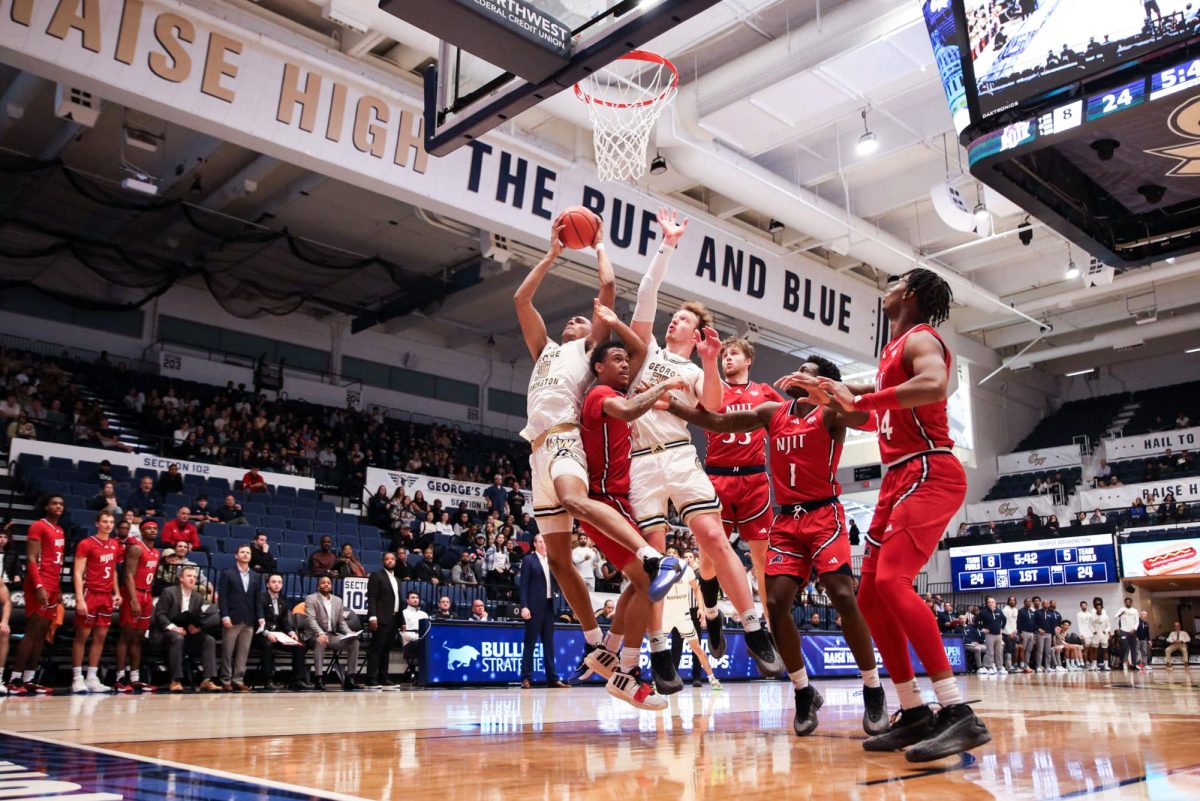Title IX, a law designed to enforce gender equality in athletics, has come under much scrutiny since its creation in 1972. But with its 30th birthday last year, the legislation now faces perhaps its toughest examination ever – a law suit brought by the National Wrestling Coaches Association saying 355 men’s college teams were cut because of Title IX. Arguments concerning the importance and legality of the law ensued, resulting in a congressional committee that offered recommendations to modify the law. Last month, the committee passed 23 recommendations to Secretary of Education Rod Paige on how it believes the law could be less rigid.
GW Women’s Studies professor Bonnie Morris, who is currently writing a book on Title IX, sat down with The Hatchet to discuss her views on the controversy surrounding the law.
Hatchet: Why has Title IX come under such criticism lately?
Bonnie Morris: Universities are being asked to review affirmative action-type systems in a trend of rolling back civil rights, and with current opinion of Title IX being incorrect, the universities are forced to look at the way gender rights are being carried out.
Further controversy has risen from the complaints brought about by the National Wrestling Coaches Association, which argues that Title IX is a form of reverse sex discrimination. Some even argue that gender rights have gone too far and are no longer needed.
H: How valid are the claims that men’s sports are suffering because of Title IX?
BM: The way the argument has been framed is invalid. It is true that universities are now struggling with how to divide the budgets between men’s and women’s sports and it is also true that in order to support women’s sports, some universities have responded by slashing men’s sport programs. However, they are not directed by Title IX to do so.
Men’s teams that get cut feel a slap in the face and are often searching for someone to blame, which ends up being Title IX, arguing that there would be more money to go around if women weren’t getting a cut of the pie.
H: Despite the growth over the years, funding for women’s sports is still disproportionately smaller than that of men’s. Why hasn’t more opportunity and equality been spread out to women?
BM: The sad thing is that although Title IX is over 30 years old and there has been an estimated 800 percent increase in women’s involvement in athletics, most of the growth occurs at the high school level. There are just not enough spaces at the collegiate level to accommodate the women who participated in sports in high school. This creates a bigger problem for women in the future because we are exposing women to the idea of a lifetime of fitness as young women, but as the girls age, the opportunities to play at an elite level or make money are decreased.
H: How fair is the proportionality prong of Title IX that states the ratio of athletes at an institution must be “substantially proportionate” to a school’s enrollment?
BM: The proportional prong is complicated because there has been an increasing trend of non-traditional women who are older and not interested or not eligible to play sports enrolling at the collegiate level that are still factored into the equation.
There is a lot of resentment from traditional undergraduate men who have been playing a sport since they were, say, five, and only being able to participate if recruited, while women are encouraged by many sports to be a walk-on.
H: What role does the media play in this battle?
BM: The media offers far more time and exposure to female athletes who are both talented and conventionally feminine and pretty as you will see in Anna Kournikova, who you will see over and over again in the media. You didn’t see Martina Navratilova endorsing anything in her heyday. The people picked to be the role models pretty much have to possess a hint of sex appeal for the male viewing audience, which is a very significant demographic. So the question here is whether we discourage women who are good athletes but do not necessarily look “telegenic.”
H: How effective will upcoming congressional hearings on Title IX be?
BM: Many women athletes and members of women’s organizations have concerns with the hearings because of the bias of many of panel members. Many of the people are not familiar with the Office of Civil Rights handbook and will push for hasty changes to Title IX, while still being unclear on what the law really states and well as what the message is. Many of these coaches on the panel have lots to lose if cuts are made to a football team, which explains their hostility.
H: What other solutions might there be?
BM: What needs to be done is to examine the excessive spending in sports budgets for team such as men’s football and basketball that have enormous budgets that claim they can’t make any cuts. Though it is argued the football is a moneymaker, very few teams actually pull in a profit.
The biggest question to athletic directors is how to manage the money so that there is enough for everyone. The biggest problem comes from the fact that because there were not women’s teams in the past, men’s teams get hurt while schools try to play catch up. But good planning by an athletic director should keep it so you do not have to dump an existing team.
H: What more needs to be done for those interested in saving Title IX?
BM: The successes of Title IX need to be stressed more. So many women are participating in sports, it is so healthy in girls and study after study indicates that girls involved in sports are less likely to smoke, have unplanned pregnancies, be suicidal, do drugs, etc.
I think we also have to be careful not to make assumptions that sports are a right for boys and a privilege for girls. They are a right for everyone. The underlying message in all of this is that it hurts girls just as much as boys when sports are taken away from them.






